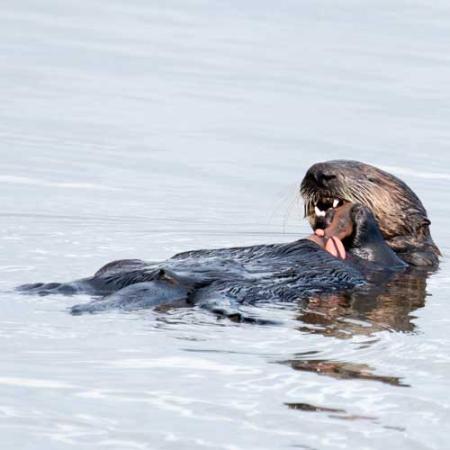Posted: October 8, 2019
Video Transcript
Sharlene Santana, Curator of Mammals
So this is one of the very few Baird's beaked whale that are on display around the world. So it's a very unique specimen to have on display here at the Burke Museum.
These whales are deep divers so they're rarely encountered as strandings, as we did.
Jeffrey Bradley, Mammalogy Collections Manager
It's just a really cool species. Beaked whales in general are amazing animals.
The Marine Mammal Stranding Network sent us an email with notice of a stranding of a Baird's beaked whale on the coast of Washington.
The typical way museums will clean whales is they'll bury the skeleton. And you bury the skeleton you put the bones in the ground and then you let nature's normal processes of decay go to work on the remains.
The burial for her ended up being about two years. We stored those bones on the roof of the old Burke for about a year as we were deciding where she was going to go to get articulated.
Sharlene Santana, Curator of Mammals
So the ancestors of whales, of course, they walked on land. They were hoofed animals. So it's a really cool reminder of where these animals come from in an evolutionary sense.
When visitors come and look at the bones I hope there are lots of questions as to 'what are those bones?' and 'why do they have them?' And that could become a really great moment to teach people about evolution and the diversity of mammals.
Jeffrey Bradley, Mammalogy Collections Manager
They're fast, powerful predators down at enormous depths using biosonar to catch animals who are trying really hard not to get caught. And so we wanted the posture of the whale to reflect that activity.
And this pose right here, I really think just kinda shows...that gives you a sense of what's going on down there when she's hunting.


